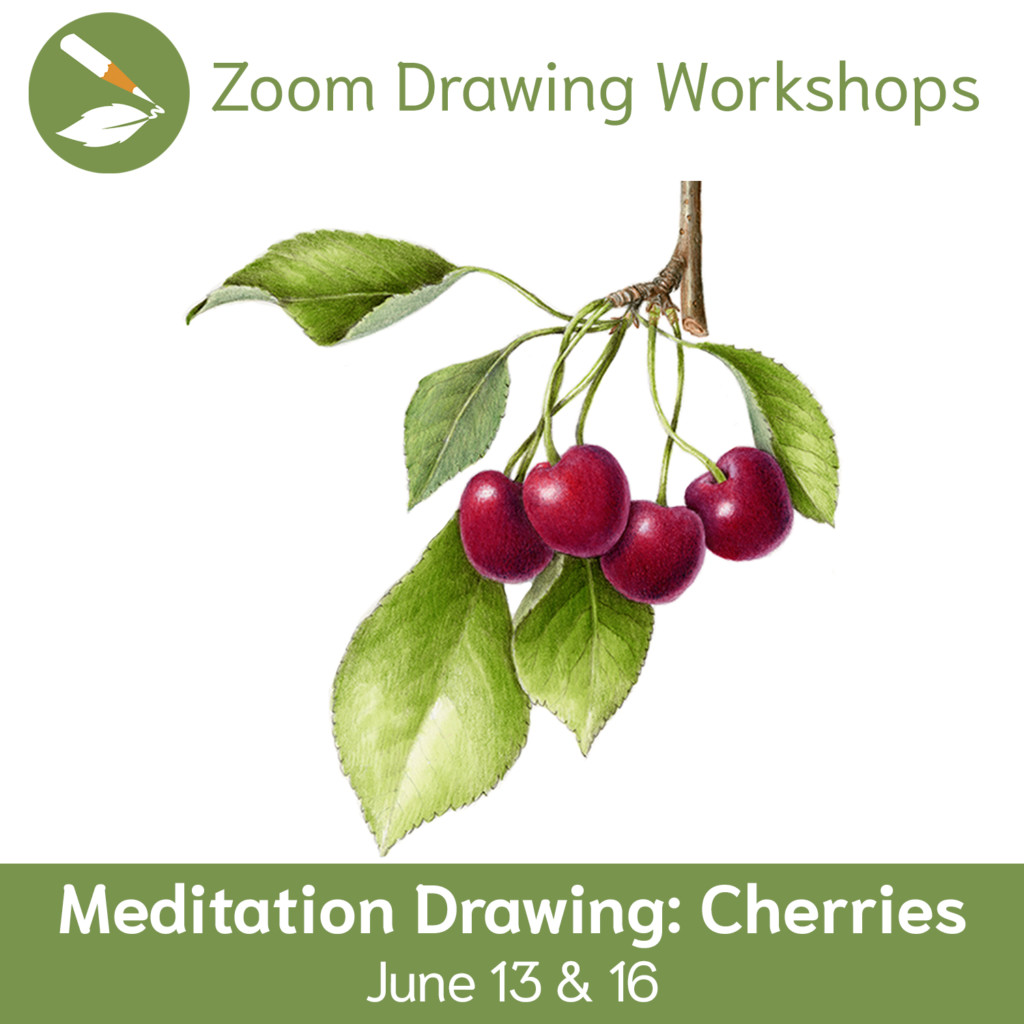
We all find happiness in our own ways, whether we chase peaks of euphoria or nurture a constant connection to our true selves. From the calm stability of meditative toning (read on for guided exercises) to the euphoric high of finishing a beautiful and realistic rendering, botanical drawing can benefit everyone, which is why we make it our job to teach it to you in a way that is inclusive and fun.
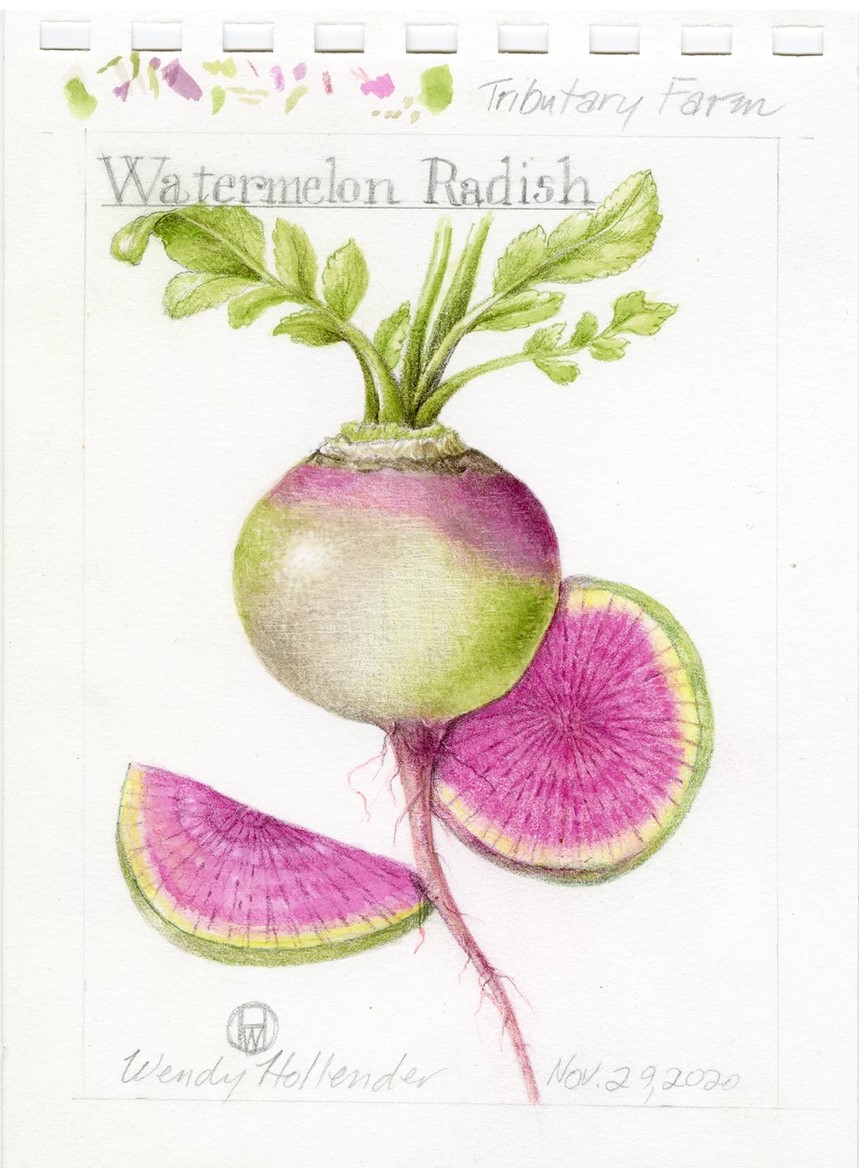
Botanical art is like songwriting, “If you choose to approach songwriting as a spiritual practice, it becomes one… There’s a spirit inside us that leans toward love like a flower to the sun, a built-in mechanism that pushes us toward connection.” wrote songwriter, Mary Gauthier in her book, Saved by a Song. When we approach botanical drawing as a spiritual practice, we notice that flowers lean toward the sun and foster connections with ourselves, our communities, and the earth.
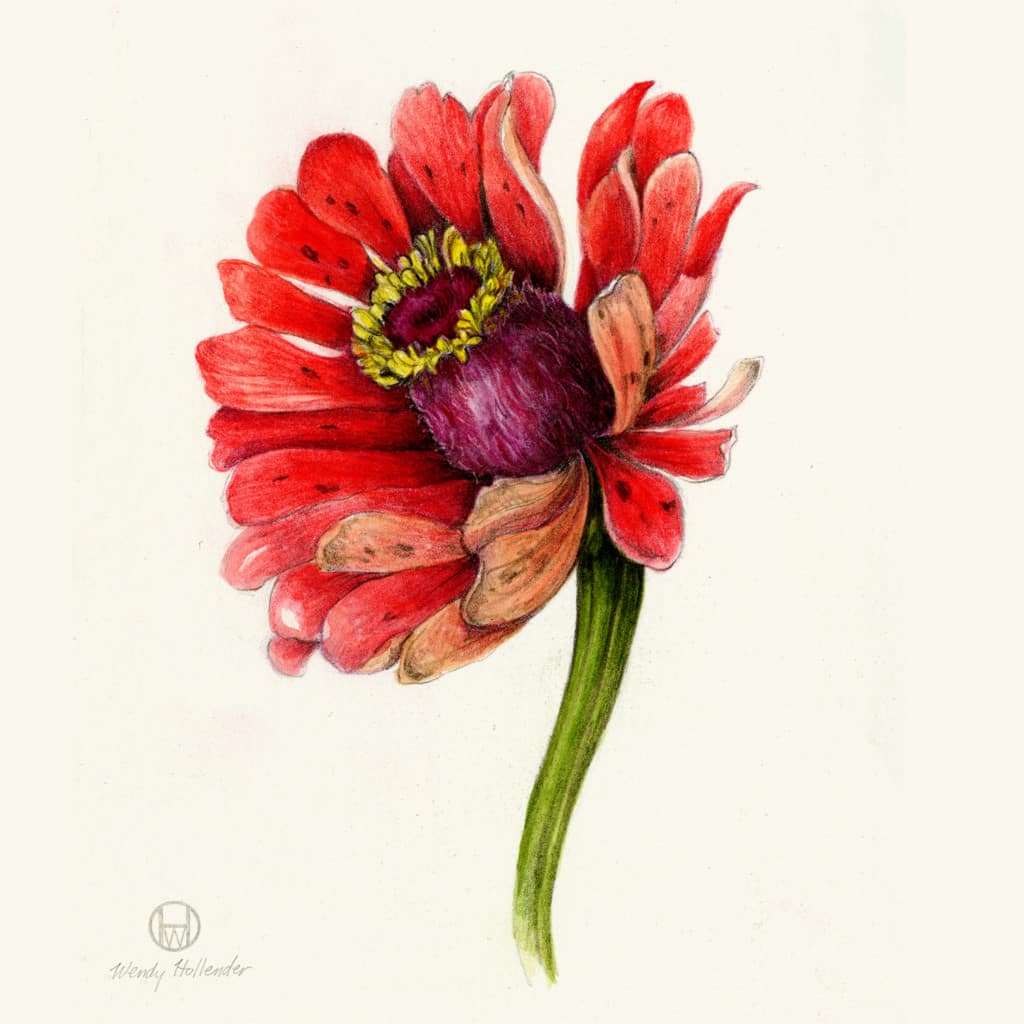
Pick up your pencil, and slowly start marking your paper with vertical strokes. Feel your pencil move against the paper with the slightest hint of resistance. Press lightly at first; delicately dance the color across your page in slanted strokes. Then try pressing harder; eventually thoroughly saturate your color with horizontal strokes. As you try different pressures and stroke in different directions, notice how the strokes feel different in your body. When you press hard, does your hand tense up? Does your jaw clench? Do your toes curl? When you press lightly, do you release tightness in your chest? Do you lean back in your chair? Noticing these physical sensations helps you engage with awareness.
“The wonderful thing about the path of mindful drawing is that … it’s a dynamic process, which invites us to engage with awareness, not just with our minds, but with our bodies too, with our whole being. All we need to do is — do it. Just draw, and all the rest follows.” – Wendy Ann Greenhalgh (Mindfulness and the Art of Drawing)
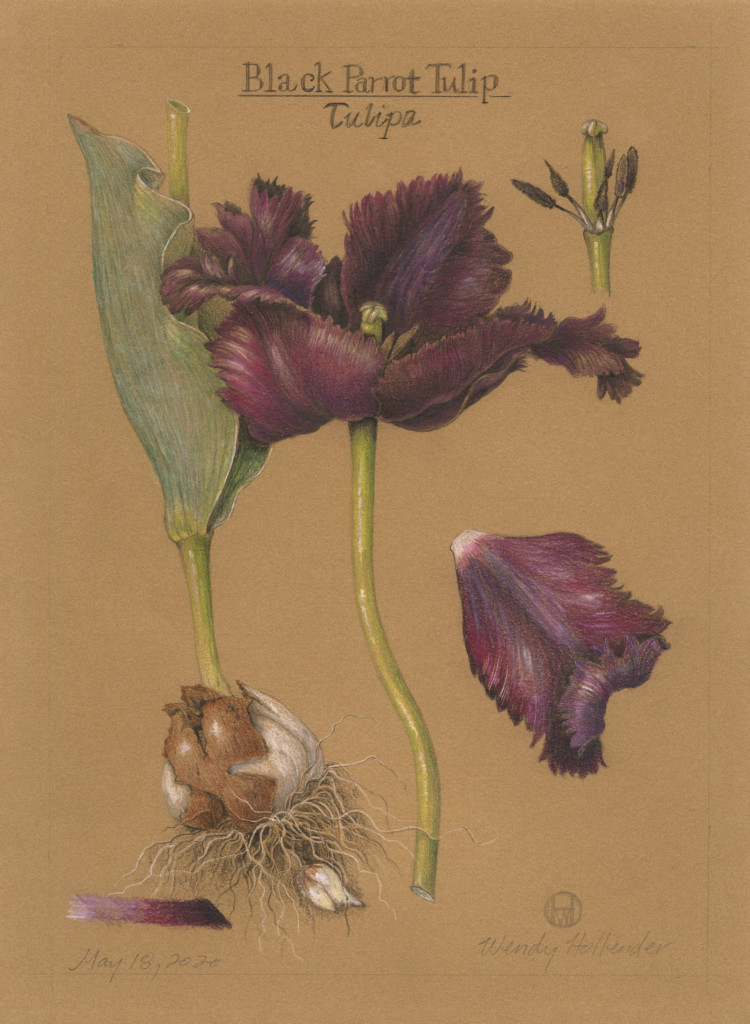
This article from the Washington Post lays out “four reasons why creative activity is such a potent recipe for psychological well-being:”
- Art is a vehicle for meditation and self-connection ([Meditation] fosters acceptance. Creating art is a type of meditation, an active training of the mind that increases awareness and emphasizes acceptance of feelings and thoughts without judgment and relaxation of body and mind.)
- Art provides a feeling of flow and freedom
- Art allows for true self-expression
- Art helps us become steady and centered (Happiness may be less a matter of experiencing sharp highs (often followed by deep lows), and more a matter of nurturing a space that provides stability and a constant connection to our true selves.)
-Maia Gambis, Washington Post, August 2015
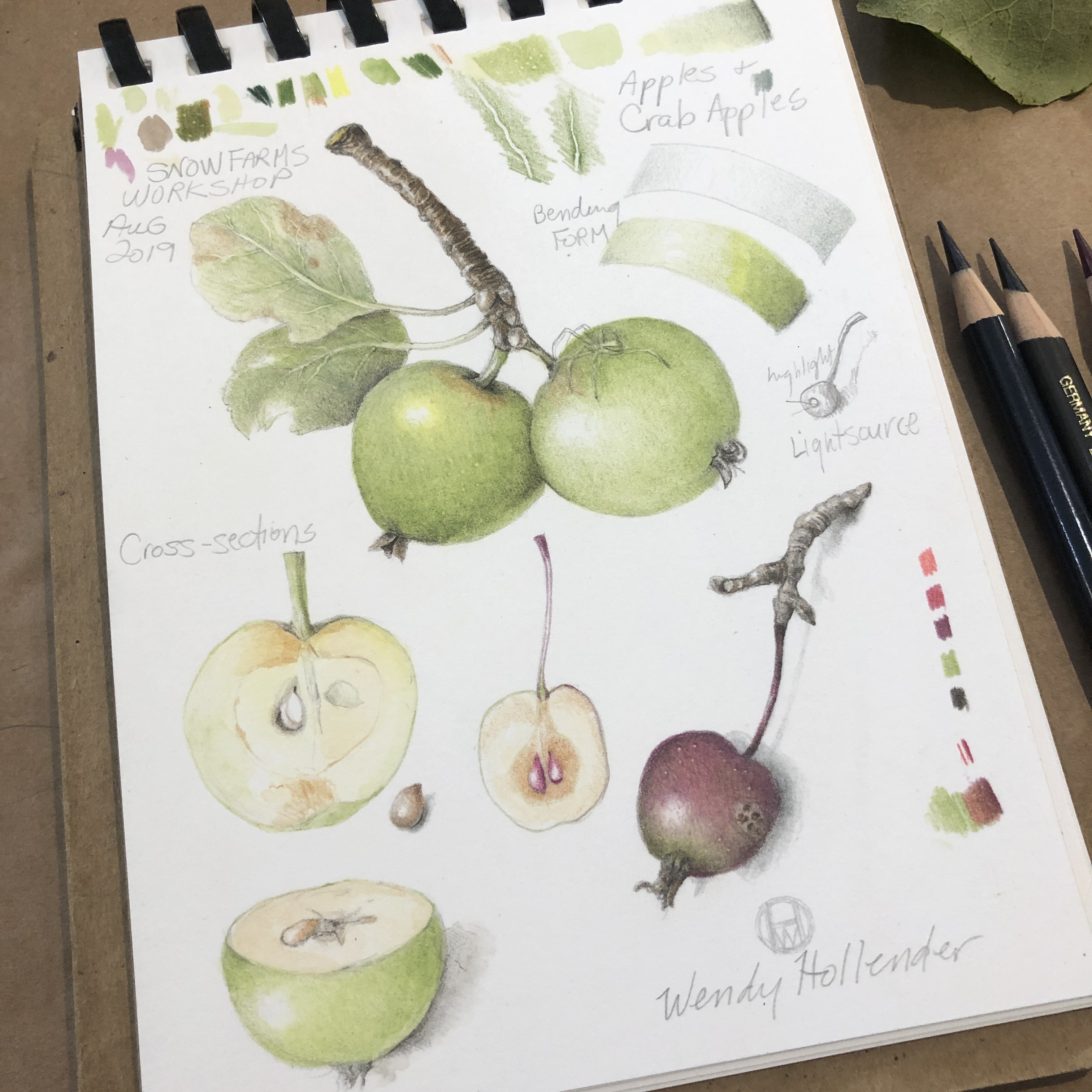
Meditative Toning Exercise
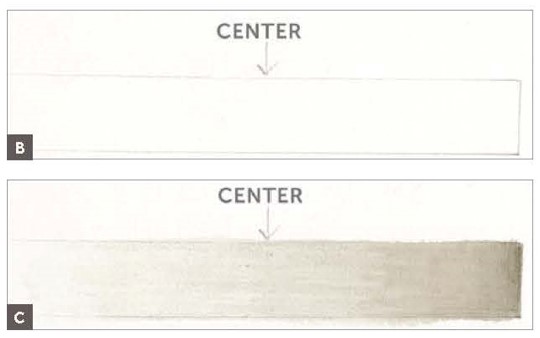
1. Create a watercolor tone bar
i. Lightly draw a ½ inch by 3 ½ inch area with a graphite pencil.
ii. Paint this area with clean water, starting on the right side and pushing the brush out to the left.
iii. Apply Dark Sepia watercolor ½-¾ of the way across, then blot your brush quickly on a paper towel and continue painting the transition into the light.
iv. While still wet, add more Dark Sepia pigment on your brush and apply, using horizontal brush strokes starting on the right.
v. LET IT DRY! (If you try to draw on top of watercolor while it is not completely dry, the paper will not take the pencil and sometimes the pencil can start to chew up the paper.) Read here for tips on practicing patience.
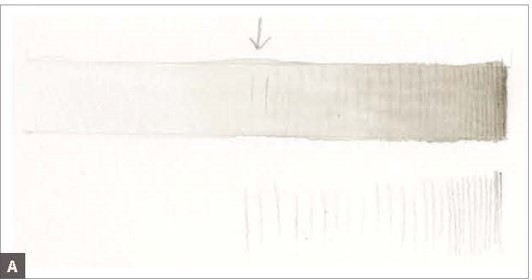
2. When your watercolor tone bar is COMPLETELY DRY, apply a first layer of Dark Sepia colored pencil starting on the right side with close, vertical strokes. Make your strokes farther apart until they end in the middle of the tone bar. (A)
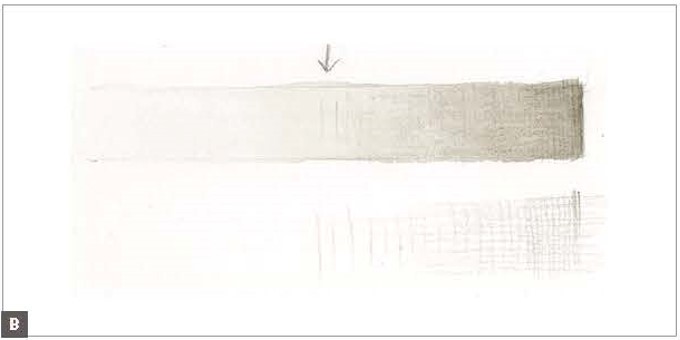
3. Hold your pencil toward the top end, and apply the next layer of tone in a horizontal direction starting from the right. In order to start getting a smooth, seamless transition of tones from light to dark, lay down horizontal strokes that are about ⅜ inch long and then do another group of horizontal strokes in between those, overlapping them a little bit. Keep adding horizontal strokes in this way to about the middle of the tone bar. (B)
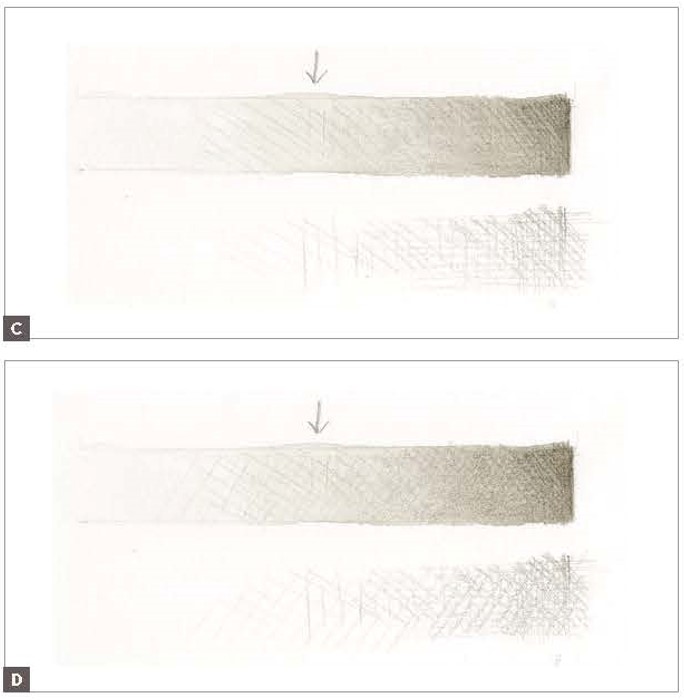
4. Add more tone in a diagonal direction, (C) followed by another layer going in the opposite diagonal direction. (D)
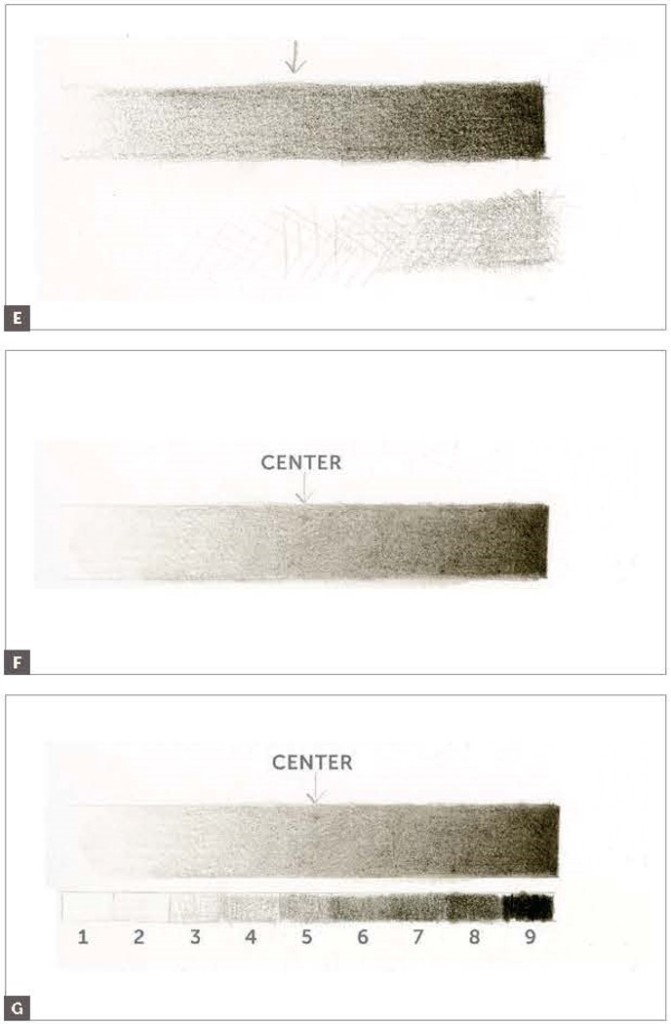
5. Continue to build layers of tone, creating the most seamless blend of values from as dark as you can get on the right side to a gradual fade into the lightest area (the blank paper color), making sure you have a complete range of tones. (E) (F) (G)
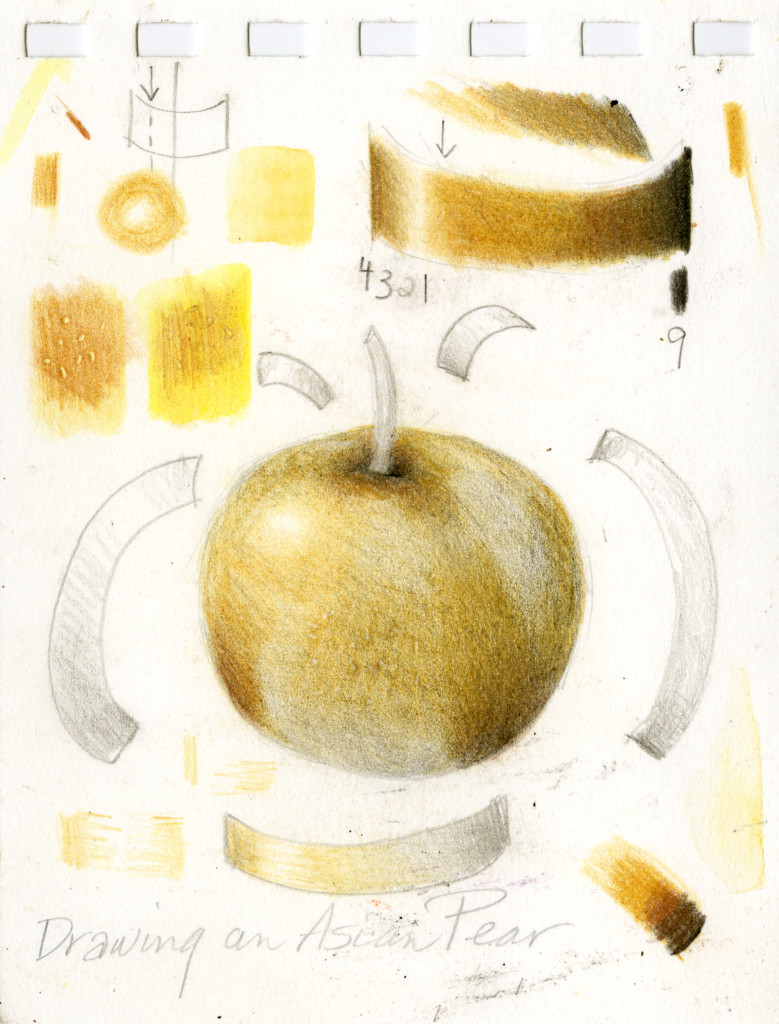
Ready to take your spiritual toning practice to the next level? Try a Curved or Three-Dimensional Tone Bar!
Use the same technique outlined above to build layers, but this time, leave the blank area inside the bar, near the middle rather than on the left edge, as shown. This lightest area is an imagined highlight. As you build tones to create a bending tone bar, you will start to see the three-dimensional illusion develop right before your eyes. This is a magical feeling, so be sure to go slowly and enjoy the process.
Imagine that your pencil point is a tiny insect crawling across this curved bar, starting in a dark, shadowed valley and slowly creeping up toward the sunlight at the top of a hill when you get to the highlight.
Allow yourself the luxury of not being an expert. Enjoy the process and don’t worry about the results!
